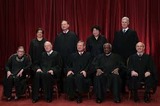
- Subject:
- Political Science
- Social Science
- Material Type:
- Module
- Author:
- Mindy Boland
- Date Added:
- 06/23/2021


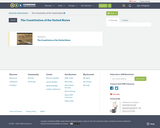


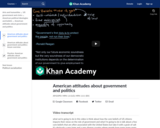
Core beliefs around the role of government in the US. Discussion of quotes by Ronald Reagan, FDR, Barack Obama and Milton Friedman.
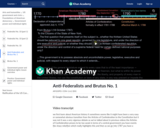
Interpreting an excerpt of Brutus No. 1, the most well-known of what will be eventually called the "Anti-Federalist Papers," which argued against the ratification of the Constitution of 1787.
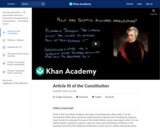
A deep dive into Article III of the Constitution, which establishes the judicial branch of the government, including the Supreme Court. In this video, Kim discusses Article III with scholars Richard Garnett and Jeffrey Rosen.

A deep dive into Article II of the US Constitution, which establishes the powers of the president. In this video, Kim discusses Article II with scholars Michael Gerhardt and Sai Prakash.
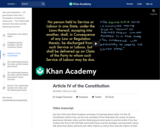
A deep dive into Article IV of the Constitution, which lays out how federalism, the system of shared governance between states and the federal government, works in practice. In this video, Kim discusses Article IV with scholars Gabriel Chin and Erin Hawley.
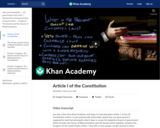
A deep dive into Article I of the US Constitution, which describes the roles and powers of Congress. In this video, Kim discusses Article I with scholars Heather Gerken and Ilya Somin.
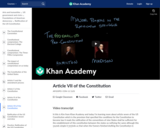
A deep dive into Article VII, which established the conditions for the ratification of the US Constitution. In this video, Kim discusses Article VII with scholars Mark Graber and Michael Rappaport.
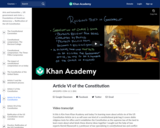
A deep dive into Article VI, which acts as the "glue" of the Constitution, holding together the new United States through a shared commitment to the Constitution's principles. In this video, Kim discusses Article VI with scholars Michael Ramsey and Kermit Roosevelt.

A deep dive into Article V of the US Constitution, which establishes the amendment process. In this video, Kim discusses Article V with scholars Michael Rappaport and David Strauss.

An introduction to the Articles of Confederation and its weaknesses. Shays' Rebellion was one of the catalysts for the Constitutional Convention of 1787.

A deep dive into Baker v. Carr, a Supreme Court case concerning equality in voting districts. Decided in 1962, the ruling established the standard of "one person, one vote" and opened the door for the Court to rule on districting cases. In this video, Kim discusses the case with Professor Guy-Uriel Charles and former Solicitor General Theodore Olson.
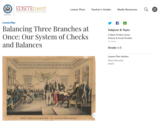
Learn about the checks and balances system of the three branches of the U.S. government.
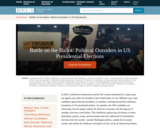
In 2016, a billionaire businessman and the first woman nominated by a major party ran against each other for president of the United States. In very different ways, both candidates approached the presidency as outsiders, reaching beyond the traditional boundaries of US presidential politics. As outsiders, the 2016 candidates are noteworthy, but not unique; indeed, the 2016 race resonates with the legacies of outsiders who have come before. This exhibition explores the rich history of select individuals, parties, events, and movements that have influenced US presidential elections from the outside—outside Washington politics, outside the two-party system, and outside the traditional conception of who can be an American president.
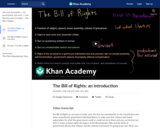
The first ten amendments to the US Constitution are known as the "Bill of Rights." These amendments protect individual liberties and limit the power of the federal government.

This inquiry examines the 20th century history of migration from Mexico to the United States and recent efforts to limit the movement of people across the southern U.S. border. The inquiry takes its inspiration from a 2018 podcast episode by Malcom Gladwell titled, “General Chapman’s Last Stand.” The podcast is part of Gladwell’s Revisionist History series (http://revisionisthistory.com). In the podcast, Gladwell tells the story of General Leonard F. Chapman Jr., Commandant of the Marine Corps during the Vietnam War, who went on to serve as the Commissioner of the Immigration and Naturalization Service (INS) from 1972 to 1975. Chapman is credited with reforming the INS into a more efficient and effective agency, but Gladwell argues that Chapman’s efforts also led to an unintentional increase in unauthorized immigrants. In 1970, 760,000 Mexican immigrants, or 1.4% of Mexico’s population, lived in the U.S. By 2008, there were 12.7 million Mexican immigrants in the U.S. which amounted to 11% of all people born in Mexico; an increase of almost 800% in less than 30 years. The question of how and why this happened is the central focus of this inquiry.